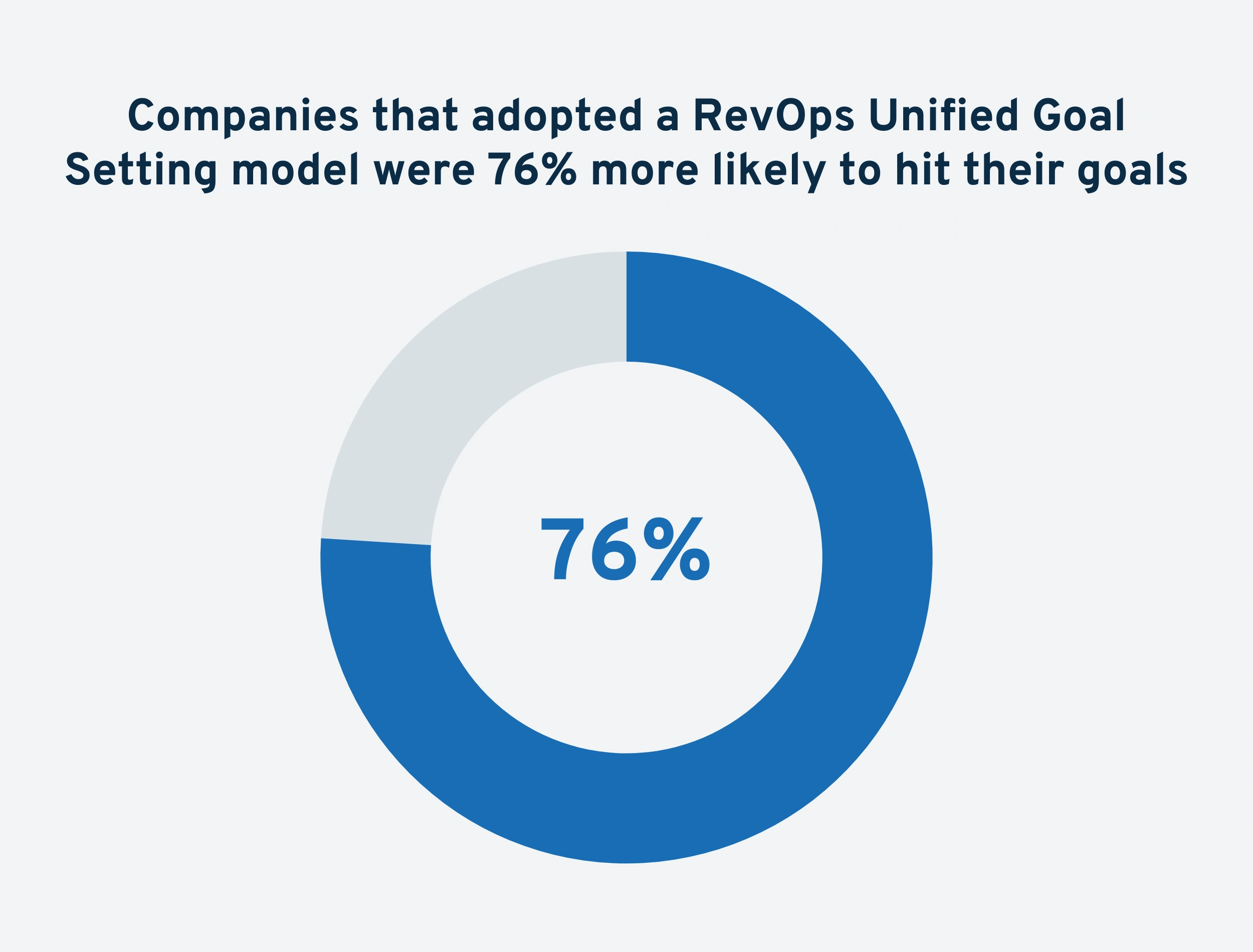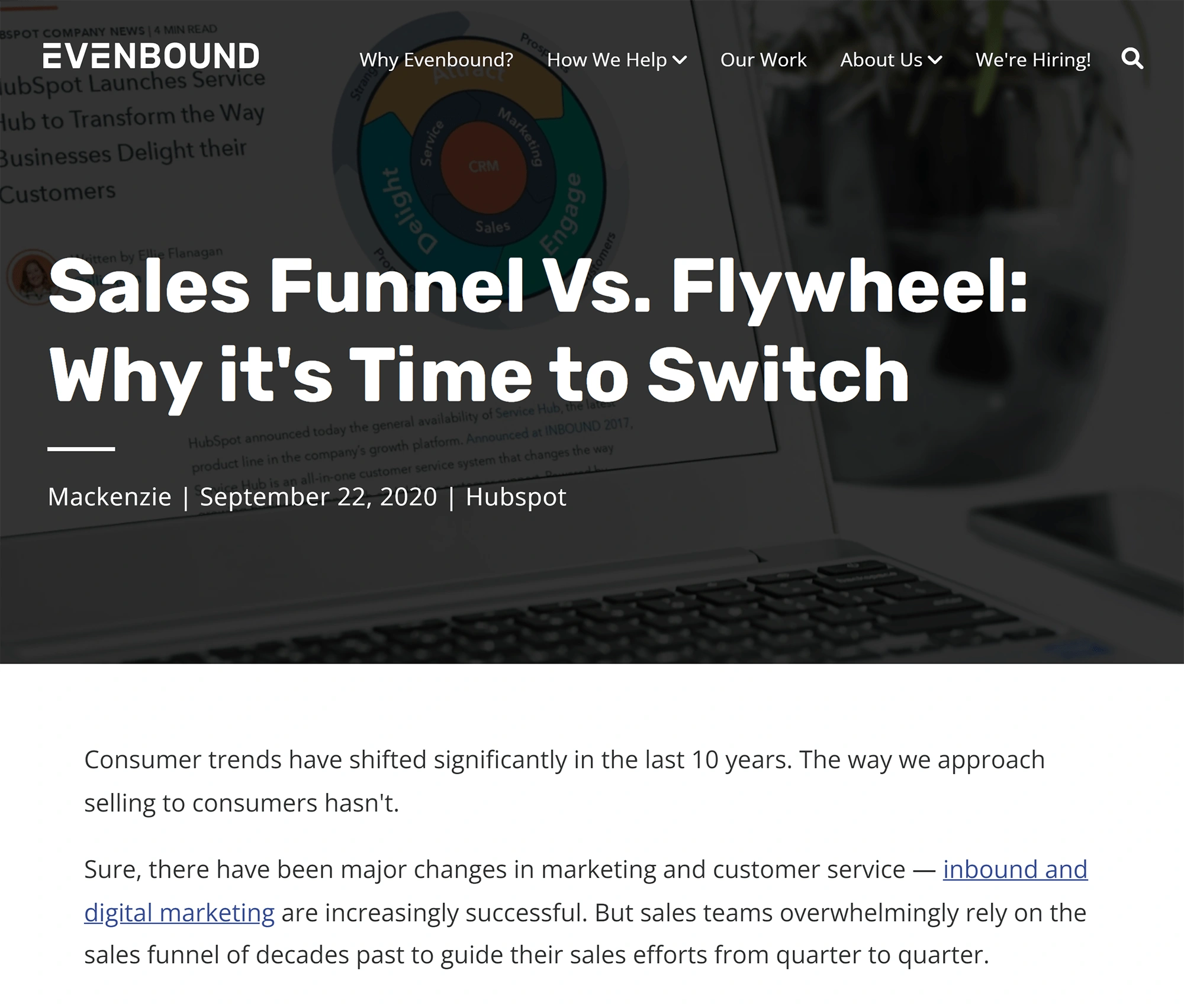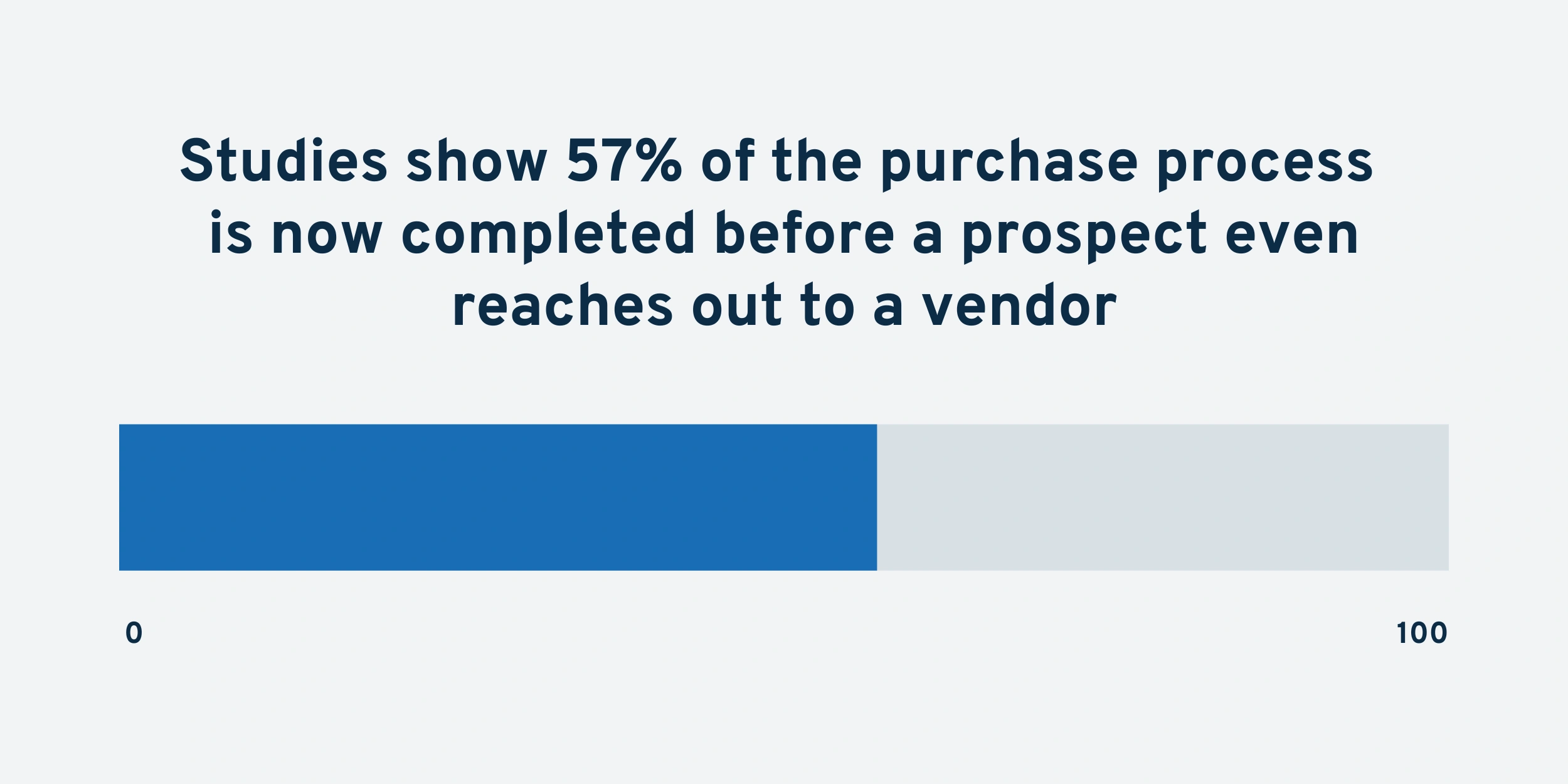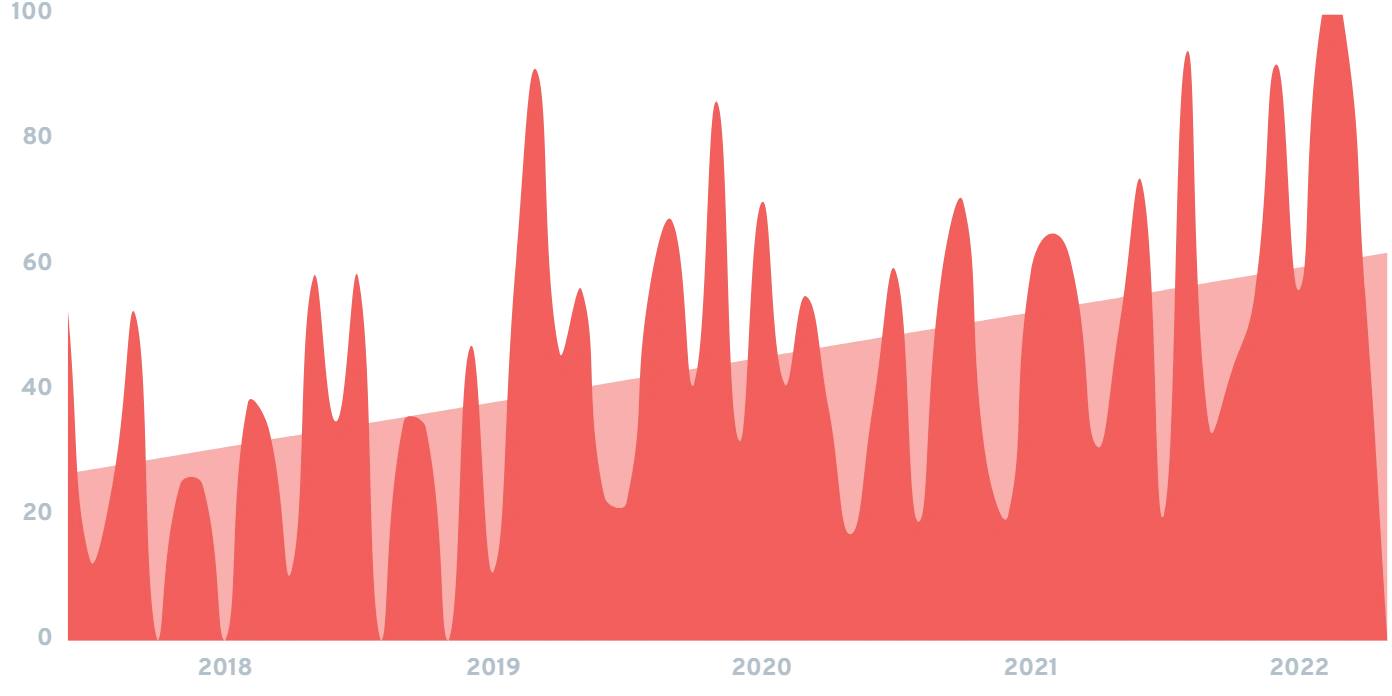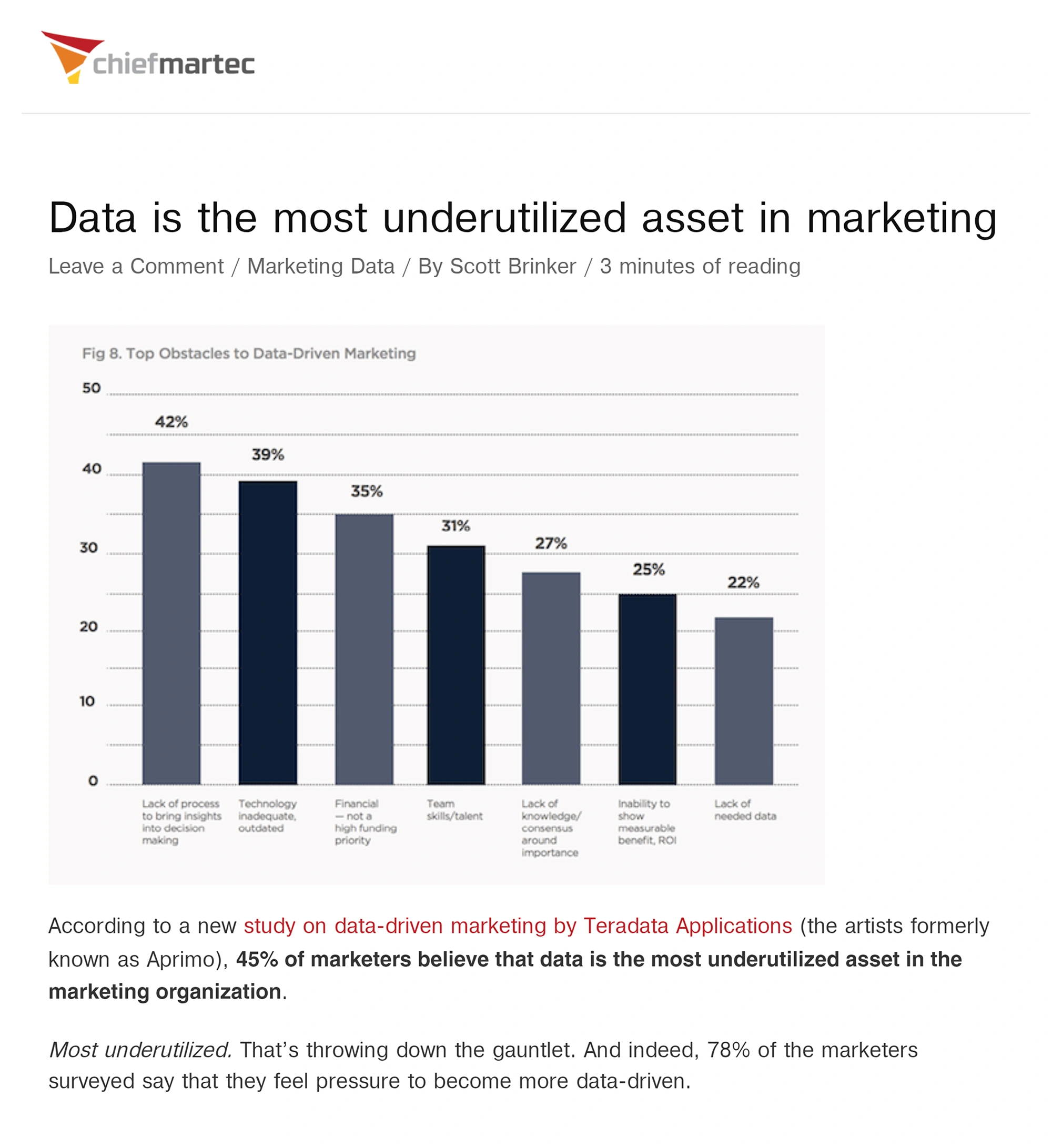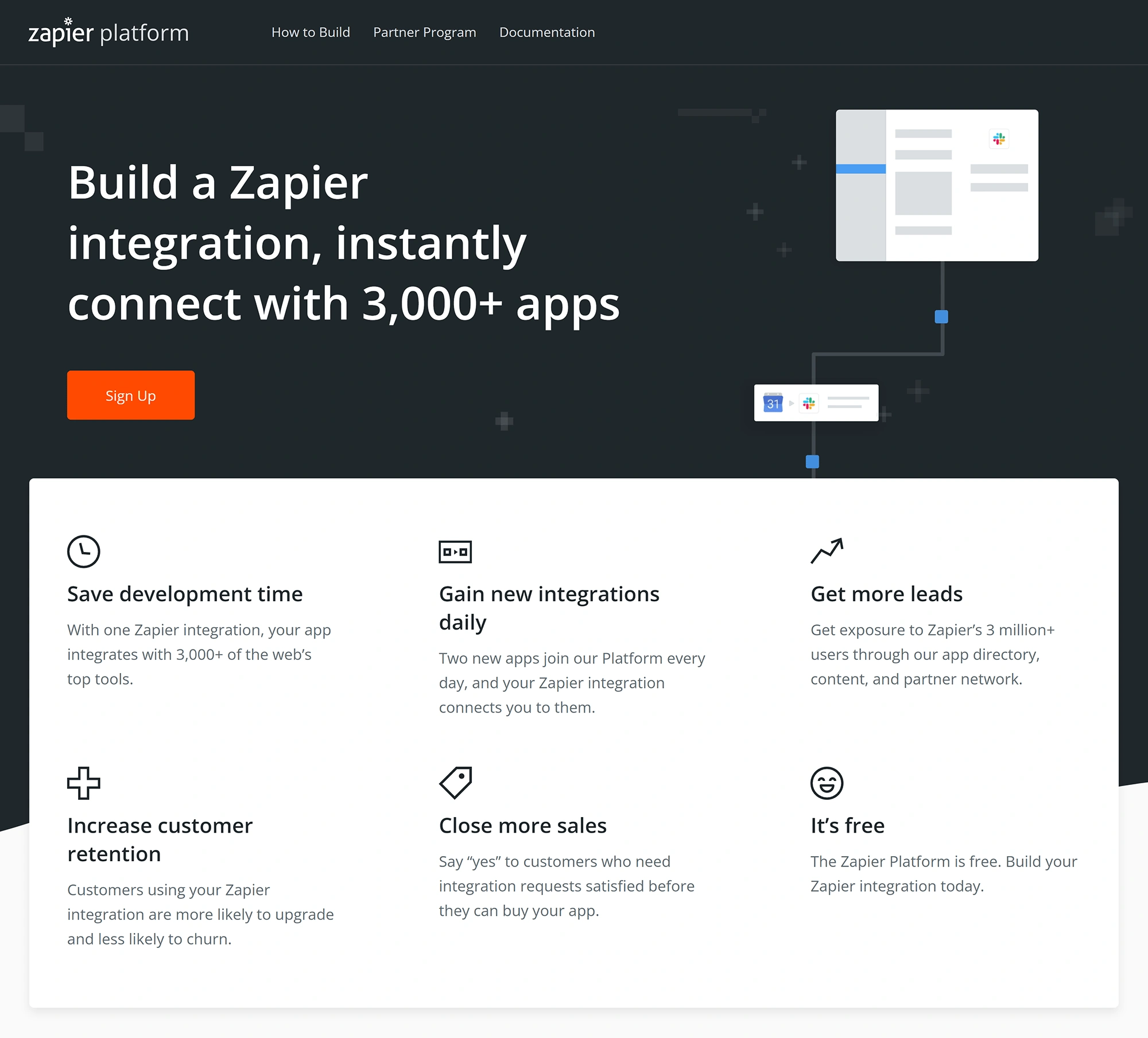
Beginner’s Guide to RevOps
Over the past year, interest in the concept of Revenue Operations (aka RevOps) has skyrocketed.
Interest in RevOps has increased by more than 3x over the last 2 years.
Unlike SalesOps, which focuses exclusively on maximizing revenue via the Sales Department, RevOps takes a multi-departmental focus.
Per Digitopia, this is achieved by “aligning a company’s marketing, sales and customer service departments across the company’s process, platform and people.”
Admittedly, the concept of increasing topline revenue is nothing new.
However, by removing departmental labels - and dedicating employees (and even entire teams) to the task of inter-departmental revenue growth - companies are achieving faster growth than their non-RevOps counterparts.
Contents:
- What Is RevOps?
- Key RevOps Statistics
- Why RevOps Matters
- How RevOps Helps Fix Problems With The Traditional Funnel Model
- Adapting To The Modern Sales Process
- Removing Departmental Silos
- Full Funnel SOPs
- Who’s Responsible For Implementing RevOps
- Making Sense Of The Data
- Using Data To Drive Initiatives
- Using KPIs To Achieve Ongoing Growth
- Building The Tech Stack
- Driving Growth Through AI
- Difficulties In Implementing RevOps
What is RevOps?
RevOps (short for “revenue operations”) is an approach designed to integrate departments within a business in an effort to increase revenue-creating activities.
Compared to the traditional way of running a business - where marketing, sales and fulfillment operate as separate functions - RevOps professionals look at a business more holistically.
In particular, RevOps professionals look at any activity in the business that generates revenue as part of one larger, revenue-generating ecosystem.
Admittedly, revenue operations don’t cover activities like HR, accounting or finance. However, when it comes to growing a company’s revenues, one could argue RevOps is a new paradigm or philosophy regarding how a business can increase revenue most effectively.
And with most companies who implement RevOps outperforming their counterparts, it's a paradigm a growing number of companies are experimenting with.
Key RevOps Statistics
Business consulting company Gartner believes 75% of today’s highest grossing companies will adopt a RevOps Model by 2025.
And for good reason.
According to HubSpot, companies that adopted a RevOps Unified Goal Setting model were 76% more likely to hit their goals than were companies that relied on a Structured Goal Setting model.
Further, according to LeanData, companies that “align their revenue engine grow 12-15 times faster than their peers and are 34% more profitable.”
Here’s a breakdown of what RevOps is and how it works.
Why RevOps Matters
At its core, RevOps involves tearing down the silos that result in disjointed company departments working out of sync with one another.
As any CEO or entrepreneur knows, working to get multiple departments operating on the same page can be challenging.
Especially when it comes to sales and marketing.
In terms of cliches, it doesn’t get much worse than Sales blaming Marketing for delivering “weak leads.”
The same goes for Marketing blaming Sales for “not being able to close.”
On top of that, in many organizations, communication between Sales and Fulfillment (Account Managers, Concierges, etc.) is limited or non-existent.
Add in a variety of disconnected software platforms, and accurately monitoring revenue generation can become highly complex.
RevOps, however, aims to solve this.
How RevOps Helps Fix Problems With the Traditional Funnel Model
At its core, RevOps considers how systems and processes can be used to improve inter-departmental effectiveness and efficiencies.
One way of understanding the need for RevOps is by comparing the traditional top-down sales funnel to the more modern Flywheel concept.
In the funnel model, marketing generates leads while content marketing and salespersons are responsible for nurturing the lead. From there, sales is responsible for closing prospects while service employees are responsible for retention and ascension.
While many companies have achieved success with the funnel model, an equal if not larger number have failed to make the funnel model work. Why?
Because over the last two decades, consumer buying preferences - and therefore the sales process - have shifted.
Adapting to the Modern Sales Process
In particular, because consumers can now self-educate (thanks to content marketing and the vast distribution of information), many consumers now wait as long as possible before initiating contact with a salesperson.
In fact, studies show that 57% of the purchase process is now completed before a prospect even reaches out to a vendor.
As a result, the top-down approach of trying to systematically move leads from marketing to sales - via what is in many cases an automated process - can feel forced (if not downright aggressive).
With the Flywheel Model, however, the separation of marketing, sales and fulfillment isn’t as clearly defined (nor is the path so linear). Instead, the goal of the Flywheel model is to create a holistic, customer-centric model that considers how marketing, sales and fulfillment affect each other.
Because of that, one could argue that RevOps lies at the core of the Flywheel itself.
Interest in the concept has been increasing over time.
Removing Departmental Silos
Before Revenue Operations can be implemented, the barriers that stand between Sales, Marketing and Fulfillment must first be torn down.
Examples of barriers that may exist between departments include:
- Software programs that don’t integrate with one another
- Inability to access another department’s records or data
- Conflicting priorities (especially as it relates to an individual’s career performance)
- Poor interdepartmental communication
- Insufficient communication during the handoff process
- And more
As an example, transitioning a prospect from Sales to their new Account Manager can be difficult if the salesperson doesn’t provide in-depth records regarding the client’s needs, expectations, etc.
In addition, a marketing team may believe the messaging they’re using is attracting the right type of leads. But without data-driven feedback from Sales as to the qualification of those leads, it can be hard to measure the performance of said messaging.
Revenue Operations, however, is designed to remove these barriers.
Full Funnel SOPs
In particular, RevOps aims to create “Full Funnel” SOPs to replace what are traditionally department-specific SOPs.
To do so, however, requires removing departmental labels.
Because of that, the person(s) responsible for implementing RevOps must look at themselves as more than just a Marketing, Sales, or Fulfillment employee.
Instead, most of today’s top organizations are creating Revenue Operations roles that transcend the departments they’re responsible for optimizing.
Who’s Responsible for Implementing RevOps
As of today, most companies will find themselves in one of three situations with regards to hiring someone to implement RevOps.
1. Transitioning an Existing Staff Member
In companies with limited budgets, it's possible an existing staff member would be tapped for executing revenue operations.
Depending on this person’s background, skills and departmental loyalties, this may or may not be the ideal situation.
First, creating inter-departmental SOPs requires an understanding of the existing systems and processes inherent to each department. Mainly because - without an understanding of each department’s existing SOPs - identifying how to create more effective and more efficient SOPs could prove difficult.
Further, creating SOPs, in general, requires an understanding of Operations most people do not have first-hand experience with. Because of this, making an internal hire could limit a company’s ability to implement revenue operations.
This, in turn, could make it difficult for the organization to fully benefit from RevOps.
2. Hiring a Dedicated RevOps Employee
The next and arguably more effective solution is to hire a new, dedicated RevOps employee.
Ideally, this person would have experience implementing RevOps in a similar-sized company and/or in a similar industry.
Admittedly, finding this person may be difficult.
As of this writing (May 2022), job site Indeed only has 347 job openings listed for Revenue Operations related positions. On the flip side, there are more than 250,000 Software Engineer job openings listed.
With that said, a 2018 article from Michael Lowe at Observe.AI shows growth in Revenue Operations positions dramatically outpacing growth in Sales related positions (VP / Director of Sales).
Given how much interest in RevOps has increased over the last year, it’s safe to assume interest in RevOps careers has only increased relative to 2018.
Searches for Revenue Operations jobs are increasing.
3. Hiring a RevOps Team
The final option for implementing RevOps involves assembling a Revenue Operations team.
Assembling a RevOps team can be done in a multitude of ways, including hiring for each role internally, externally or through a combination of both.
Further, in organizations with complicated software programs, demanding regulatory requirements, etc., delegating the work to multiple topic-specific experts may be both desirable and/or necessary.
In particular, companies may need to hire specific individuals to map the overarching RevOps strategy, integrate custom and/or legacy software programs, create the actual systems and processes, etc.
Making Sense of the Data
While not the only component, syncing up each and every software involved in the revenue generation is a critical component of the RevOps process.
There are multiple reasons for this.
First, successfully optimizing a company’s revenue generation means understanding where that revenue is coming from in the first place. And not just initial revenue, but revenue that’s generated as a result of retention, expansion, etc.
Admittedly, modern technology has made it easier for companies to log and track revenue from all the above sources and more. With that said, tracking where revenue comes from - and using that data to make insight-driven decisions - are two different things.
In fact, multiple studies have shown today’s corporate executives are overwhelmed by the amount of data at their fingertips. Because of that, much of today’s data is under-utilized or not used at all.
On the flip side, a RevOps professional will understand both how to organize your company’s data and how to make sense of it.
Using Data to Drive Initiatives
Once meaningful insights have been deduced from a company’s data, the next step is to use those insights to drive future initiatives.
On the strategic side, this means growing and/or optimizing revenue generators that meet or exceed benchmarks, while fixing, reducing or eliminating underperformers.
As an example, analysis may show clients who receive two onboarding calls from their account manager spend 10% more than clients who only receive one. From there, a RevOps professional would build an SOP so that every client in the company receives two onboarding calls.
Combining data and insight to drive initiatives, however, is only half the battle.
Because once those initiatives have been developed, constantly measuring KPIs against benchmarks is key to moving the RevOps process forward.
Using KPIs to Achieve Ongoing Growth
Attributed to business guru Peter Drucker, you’ve likely heard the quote:
“What gets measured gets managed.”
While most companies would benefit from hiring a consultant to help them make sense of their data, doing so is a one-time event with limited upside.
On the other hand, establishing RevOps-focused KPIs - beyond the traditional ones used to measure sales and marketing performance - is critical to creating a Full Funnel, cross-departmental growth strategy.
As an example, data analysis may show the faster a client is handed off from Sales to Fulfillment, the higher the likelihood that the client sticks around for their second month of service.
From there, a RevOps professional / team would set a benchmark for how long it takes Sales to hand off a client to the Fulfillment department. More important, after building SOPs around the handoff process, whoever oversees Sales could continually monitor handoff times with the goal of improving them every month.
Building the Tech Stack
When it comes to RevOps, gathering data - and ensuring that data can be shared between teams with ease - is critical to measuring performance against benchmarks on an ongoing basis.
Because of that, a RevOps professional will work to get as many of the company's software programs as possible synched up and integrated with one another.
Here are the software programs most likely to be integrated into a RevOps tech stack:
- CRM / Customer Relations Management (e.g. SalesForce, HubSpot, etc.)
- Spreadsheets (e.g. Google Sheets, Coefficient, etc.)
- Project Management (e.g. Asana, Trello, etc.)
- Revenue Intelligence Software (e.g. Gong.io, Canopy, etc.)
Interest in “Gong.io” software.
Odds are most companies are using some form of CRM, spreadsheet, and/or project management tool already (regardless of whether they’re properly interconnected for the purpose of revenue operations).
What is unique to the RevOps process, however, is Revenue Intelligence software.
Driving Growth Through AI
Through the use of artificial intelligence and machine learning, Revenue Intelligence software can automate and streamline the process of gathering data, analyzing it, and sharing that data between departments.
The importance of this to the RevOps process cannot be overstated.
Mainly because most software programs are set up to measure the KPIs most relevant to their function (e.g. how SalesForce measures sales-related KPIs).
While having this data is great, it’s department-specific. Implementing revenue operations, however, requires tearing down the silos that separate departments.
Because of that, one can think of Revenue Intelligence software as the meta-program that syncs up data from a company’s sales, marketing and fulfillment departments.
Keyword Searches for Revenue Intelligence Software.
In particular, Revenue Intelligence software works well for aggregating data that is traditionally siloed inside one department, or unreadable/inaccessible by one of the company’s multiple software programs.
Difficulties in Implementing RevOps
While many companies have seen above-average growth as a result of implementing RevOps, doing so requires confronting a variety of challenges.
In what was the industry’s first ever RevOps survey, Lean Data identified the following as the top obstacles involved in implementing revenue operations.
Culture
While a well-led company will have a clearly defined culture, it's common for departments within a company to have their own subculture.
As an example, a marketing department may have a more relaxed, creativity-oriented culture while that of the HR or Finance department may be more formal and/or strict.
Given the RevOps process requires getting multiple departments working in sync, creating cross-department SOPs can spark culture clashes between departments.
Because of that, increasing conflict resolution between departments may increase the likelihood of effectively implementing RevOps.
Resources
Given RevOps requires the creation of new, cross-departmental SOPs, its natural new tasks will be created as part of the process.
For better or worse, the creation of these tasks may add to the workload of specific employees or even entire departments.
Because of that, some companies have run into a lack of resources with regard to implementing the revenue operations process.
Inconsistent / Siloed Data
As discussed above, streamlining the data gathering and sharing process is critical to implementing RevOps.
Unfortunately, doing so is not always possible.
First, while many of today’s top software programs can be connected via API, that does not mean every bit of data native to each platform can be shared between platforms.
Further, many of today’s largest organizations still use outdated legacy software systems. In particular, systems that do not integrate with today’s modern, cloud-based software infrastructure.
Because of that, implementing revenue operations could be impossible or require extensive (and highly expensive) custom programming.
Conclusion
Since the invention of business, companies have explored ways to increase revenue by optimizing their marketing, sales, ascension and retention processes.
And in many cases, those efforts resulted in substantial growth.
In the modern era, however, the lines between departments - and how those departments affect revenue growth - have blurred.
First, consumers can now educate themselves to a degree that was not possible 10 or 20 years ago. Second, companies now have access to more department-specific data than ever.
Because of that, an increasing number of organizations are zooming out and turning to RevOps as a holistic, “Full Funnel” solution for increasing revenue organization-wide.
Admittedly, implementing RevOps requires confronting obstacles that may not have existed before (as is the case when any organization attempts to achieve substantial change).
However, as more and more companies realize the benefits of overcoming those obstacles and executing the revenue operations process, it's safe to assume this is a trend corporate leaders will continue to adopt.
Stop Guessing, Start Growing 🚀
Use real-time topic data to create content that resonates and brings results.
Exploding Topics is owned by Semrush. Our mission is to provide accurate data and expert insights on emerging trends. Unless otherwise noted, this page’s content was written by either an employee or a paid contractor of Semrush Inc.
Share
Newsletter Signup
By clicking “Subscribe” you agree to Semrush Privacy Policy and consent to Semrush using your contact data for newsletter purposes
Written By


Josh is the Co-Founder and CTO of Exploding Topics. Josh has led Exploding Topics product development from the first line of co... Read more


